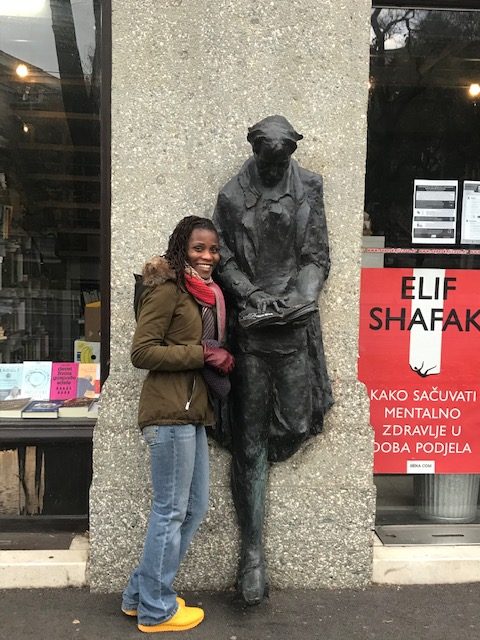
The Quest for the Best Hotel Option: A Reader-Friendly Travel Blog Guide
Travel is not just about the sights you see, but the bed you fall into at the end of a long day of exploring. The “best hotel option” isn’t a one-size-fits-all trophy; it’s a thoughtfully chosen base that matches your destination, budget, travel style, and personal preferences. In this comprehensive travel blog, you’ll find a practical framework for selecting the right hotel, practical booking tips, sustainability considerations, and a curated set of helpful links to empower you to book with confidence.
Whether you’re chasing luxury, seeking value, traveling with family, planning a business trip, or aiming for a more sustainable stay, this guide will help you determine the best option for your next adventure.
📌 Why there isn’t a single “best hotel” for everyone
The hotel that feels like the perfect fit for one traveler might be far from ideal for another. Some people prioritize location and walkable access to landmarks; others want a serene retreat with a standout spa and a rooftop pool. A few travelers want a family-friendly property with extras like kids’ clubs and babysitting, while others seek an efficient business hotel with quiet workspaces and fast Wi‑Fi.
What makes a hotel the “best” option is a blend of:
- Location and accessibility
- Service quality and on-site experiences
- Design, comfort, and atmosphere
- Clear value and transparent pricing
- Amenities that match your needs (pool, gym, dining, business facilities)
- Safety, cleanliness, and wellness standards
- Accessibility and inclusivity
- Sustainability and ethical considerations
Throughout this article, I’ll share a flexible framework you can apply to any destination, plus destination-specific ideas and credible sources to help you book with confidence.
🎯 The core criteria: what to look for in a hotel
Here’s a practical checklist you can keep handy while researching options. It’s designed to be digestible yet thorough, so you can quickly filter properties that align with your priorities.
- Location and neighborhood fit
- Proximity to sights, transit hubs, and dining
- Safety and walkability
- Noise levels (city center vs. quiet residential pockets)
- Neighborhood vibe: historic, modern, artsy, family-friendly, business district
- Service quality and guest experiences
- Staff attentiveness, multilingual capabilities, and responsiveness
- Personalization opportunities (preferred room type, late check-out, notes from prior stays)
- On-site experiences: restaurants, bars, spa, fitness, kids’ clubs, concierge
- Comfort and design
- Room size, bedding quality, soundproofing
- Lighting, workspaces, and ergonomic setup if you’re traveling for work
- Bathroom amenities and water pressure
- Value and pricing transparency
- Clear rate policies, inclusions, and deposits
- Availability of loyalty rates, member perks, or package deals
- Refundability and flexibility of change
- Amenities and facilities
- Pool, spa, gym, business center, meeting rooms
- In-room tech: reliable Wi-Fi, charging outlets, streaming options
- Dining quality and options (in-house restaurant, room service, take-out availability)
- Safety, cleanliness, and health
- Cleaning protocols and guest safety measures
- Hand sanitizing stations and well-lit common areas
- Air quality and ventilation considerations, especially in dense urban hotels
- Accessibility and inclusivity
- Room configurations for accessibility, visual/hearing accommodations
- Elevators, ramp access, and staff training on inclusivity
- Sustainability and responsible travel
- Credible certifications and transparent sustainability reporting
- Waste reduction efforts, energy efficiency, water conservation
- Local community engagement and fair labor practices
🧭 Destination-focused approach: tailoring the framework
A great way to contextualize the “best hotel” is to think in terms of destination archetypes. Here are a few common traveler profiles and what to prioritize in each:
- City break in a historic district: Look for properties with easy access to public transit, a strong concierge team, and a neighborhood character that enhances the experience. A boutique or design-led hotel in a walkable area can maximize your time on the ground.
- Luxury city hotel or resort: Expect meticulous service, refined design, exceptional dining, and premium locations. Loyalty programs and elite-status perks can offer meaningful value over time.
- Family-friendly stay: Prioritize kid-friendly zones, flexible dining options, a pool suitable for children, and convenient locations near family-friendly attractions.
- Business traveler: Reliability, speed, quiet workspaces, strong Wi-Fi, easy access to business districts or conference venues, and efficient check-in/out.
- Sustainability-first traveler: Seek third-party certifications, clear sustainability metrics, and transparent commitments from the property. Look for eco-certified properties and responsible practices.
- Beach or mountain escape: Emphasize natural light, access to outdoor activities, and a design that harmonizes with the surroundings. Family-friendly or couples-focused options may both work depending on needs.
If you have a specific destination in mind, I can customize recommendations and provide a curated “best options by category” section for that place.
🧭 How to choose the best hotel for your trip: a practical decision framework
Follow this step-by-step approach to identify the best option for your itinerary and budget.
- Define your trip goals and must-haves
- What are the top 3 things you want from the hotel? (e.g., location, spa, breakfast, gym, family-friendly amenities, late checkout)
- Are you prioritizing a long walk to sightseeing or a short ride via transit or rideshare?
- Set your budget and loyalty plan
- What is your comfortable nightly ceiling?
- Do you belong to any hotel loyalty programs, and would you like to prioritize earning or redeeming points?
- Are you open to bundling with flights or car rental for savings?
- Research neighborhoods and access
- Check the transit options near each property (walkability to metro, buses, or rail)
- Read neighborhood guides and travel forums to gauge daily convenience and safety
- Compare properties with a structured scorecard
- Create a simple 1–5 scoring rubric across Location, Service, Comfort, Value, and Sustainability
- Weigh factors according to your priorities (e.g., if you value sustainability, give it a higher weight)
- Verify cancellation flexibility and policies
- Read the fine print for refundable vs. non-refundable rates
- Confirm whether price changes after booking are possible and how easy it is to modify
- Check sustainability certifications and credibility
- Look for third-party certifications or transparent disclosure of environmental practices
- Cross-check claims with independent sources if possible
- Validate real-world experiences
- Scan guest reviews for consistency (not just the handful of glowing or dreadful reviews)
- Consider recent trends in service quality, cleanliness, and maintenance
- Decide and book
- If you can, book directly with the property for perks and flexibility
- If you’re using a third-party platform, confirm price-match or loyalty benefits
- Keep a flexible plan in case a better rate appears closer to your date
💡 Booking smarter: tips to maximize comfort and minimize stress
-
Timing and price dynamics
- Dynamic pricing means rates can rise or fall; use flexible date ranges to identify cheaper options.
- In shoulder seasons, prices often drop while availability remains good.
- Some sources suggest that staying midweek can offer savings, while others emphasize that “when you stay” can be more important than “when you book.” The key is to be flexible with dates and monitor price trends.
- A reliable approach is to set price alerts on booking sites and to review deals periodically.
-
Loyalty and direct booking advantages
- Signing up for hotel loyalty programs often yields member-only rates, free breakfast, late checkout, or upgrade opportunities.
- Booking directly with the hotel can sometimes match or beat third-party rates while adding perks like flexible cancellation or loyalty bonuses.
- Popular programs include major brand loyalty ecosystems, and there are often cobranded credit cards that maximize ongoing benefits.
-
Last-minute deals vs. advanced planning
- Last-minute deals can be compelling when plans are flexible, but they come with trade-offs like limited room type choices and stricter refund terms.
- If your plans are fixed, prepaid non-refundable rates are sometimes the best value—just ensure you’re confident in the dates.
-
Bundling and multi-component savings
- Packages that combine hotel with flights, car rental, or activities can yield meaningful savings.
- Travel portals and OTA bundles may offer additional value or promotions, especially for long trips or multi-city itineraries.
-
Use credible price predictors and tools
- Price-tracking tools and travel apps can help you see trends and predict when to buy.
- Examples include general travel platforms and specialized tools that track price history and offer predictive insights. Always cross-check with the hotel’s own site for parity.
-
Consider longer stays for better rates
- Some hotels offer weekly or monthly rates, and longer stays can unlock extra perks or discounts that reduce your average nightly cost.
-
Credit card portals and promotions
- Some cards provide access to special hotel rates or annual travel credits when booked through the card’s portal.
- Loyalty programs often pair with cobranded cards to amplify the value of stays.
-
The role of a travel advisor
- A travel advisor can help you negotiate direct rates, bundle components for savings, and provide a human-side negotiation that self-service platforms may lack.
🧭 Sustainability and responsible travel: how to evaluate a hotel
Sustainability is increasingly important for travelers who want to minimize the footprint of their trips. Here’s how to assess a hotel’s sustainability claims credibly.
- Look for recognized third-party certifications
- LEED (Leadership in Energy and Environmental Design) certification, administered by the US Green Building Council, signals energy efficiency and sustainable building design.
- Learn more: LEED certification details and levels
- Green Key and Green Key Global (Canada and beyond) focus on sustainability practices for accommodations and meeting venues.
- Learn more: Green Key overview
- Green Globe Certification: A globally recognized standard for sustainable travel and tourism.
- Learn more: Green Globe Certification
- EarthCheck: A benchmarking and certification program used by many eco-conscious brands.
- Learn more: EarthCheck programs and credentials
- Green Tourism: A certification that covers sustainable practices for tourism businesses, including hotels.
- Learn more: Green Tourism Certification
- Read credible sources and verify claims
- Some third-party resources provide clarity on what these certifications cover and how rigorous they are. Read up on how sustainable credentials are awarded and audited.
- Example overview articles: credible industry primers on sustainability certifications
- Be cautious of “greenwashing” claims that lack independent verification or detailed metrics.
- Check concrete sustainability practices
- Energy and water efficiency measures (LED lighting, smart thermostats, low-flow fixtures)
- Waste management (recycling programs, composting, single-use plastics reduction)
- Local sourcing and community engagement (food, crafts, partnerships with local organizations)
- Transparent reporting (annual sustainability reports, measurable goals, progress updates)
- Consider the broader practice
- A hotel’s sustainability efforts should be part of a broader strategy, including staff training, responsible procurement, and community impact.
Helpful learning resources:
- Green Key: A network for sustainable hotels and venues with criteria, certification processes, and member directories. Learn more: Green Key official site
- Green Globe Certification: Global standards and member listings. Learn more: Green Globe
- EarthCheck: Benchmarking and advisory services for sustainable travel. Learn more: EarthCheck
- LEED: U.S. Green Building Council’s framework for sustainable buildings. Learn more: LEED
- Green Tourism: Sustainable travel certifications and guidance. Learn more: Green Tourism
In practice, you’ll often see a hotel marketed as environmentally friendly but with varying levels of independent verification. The strongest guests’ signals come from properties with credible third-party certifications, transparent reporting, and clear, verifiable performance metrics.
🧭 A sample framework for “the best hotel option” across destinations
While there isn’t a single universal winner, the following framework helps you identify the best hotel option for your trip, with concrete signals to look for:
-
If you prioritize location:
- Look for proximity to major sights or business hubs, easy transit access, and walkability. A well-located hotel can dramatically reduce commute time and fatigue.
-
If you prize service and personalized experiences:
- Seek properties with highly-rated guest services, a proactive concierge team, and options for personalized touches (late check-out, preferred room type, in-house experiences).
-
If you crave design and ambiance:
- Consider boutique or design-forward properties that offer a memorable atmosphere, thoughtful decor, and a sense of place.
-
If value and transparency matter:
- Compare total cost, including taxes and resort fees. Prioritize refundable rates when possible, and don’t underestimate the value of included perks (breakfast, upgrade credits, lounge access).
-
If sustainability matters:
- Check for third-party certifications and public sustainability reporting. Look for authentic commitments rather than buzzword-laden marketing.
-
If accessibility is important:
- Verify accessible room types, bathroom configurations, and staff training in accessibility best practices.
-
If you travel with family:
- Look for family-friendly amenities (kids’ clubs, child-friendly menus, safety features, and a layout that suits families).
-
If you’re traveling for work:
- Prioritize reliable Wi-Fi, quiet workspaces, ergonomic desks, and meeting facilities that fit your business needs.
-
If you’re new to loyalty programs:
- Consider joining a couple of programs to diversify potential benefits, then focus on the ones that align with your most frequent destinations.
📚 Helpful links and resources
To help you verify details, compare options, and book with confidence, here are credible sources and tools you can consult as you search for the best hotel option:
-
General booking and deal-spotting resources
- Hotels.com and their loyalty/One Key rewards program: https://www.hotels.com/
- Hotels.com One Key program overview: https://www.hotels.com/hotel-deals/one-key/
- Priceline and bundled travel deals: https://www.priceline.com/
- Skyscanner and flexible travel tools (price alerts and whole-month searches): https://www.skyscanner.net/
- Hopper price predictions and travel deals: https://www.hopper.com/
-
Loyalty programs and value comparisons
- NerdWallet: Best Value Hotel Rewards Programs in 2025 (in-depth analysis of points value, earning rates, and redemption options): https://www.nerdwallet.com/article/travel/hotel-loyalty-programs
- The Points Guy (TPG) program guides and current best-value programs (for context and comparisons): https://thepointsguy.com/
- TPG also hosts extensive articles on specific programs and elite-status benefits (worth a read when you’re deep in planning): https://thepointsguy.com/guides/hotel-loyalty-programs/
-
Sustainability certifications and credible frameworks
- LEED (U.S. Green Building Council): https://www.usgbc.org/leed
- Green Key (Green Key Worldwide): https://www.greenkey.global/ (certifications and directory)
- Green Globe Certification: https://www.greenglobe.com/
- EarthCheck: https://earthcheck.org/
- Green Tourism (UK-based scheme with global reach): https://www.green-tourism.com/
-
Industry insights on hotel pricing and booking timing
- Travel + Leisure article on best time to book a hotel to save money (updated with current guidance and insights): https://www.travelandleisure.com/trip-ideas/best-time-to-book-hotel
- Travel + Leisure planning tips (additional context on timing, saving strategies, and loyalty programs): https://www.travelandleisure.com/planning
- Smart Meetings: Sustainable hotel certifications primer and why certifications matter: https://www.smartmeetings.com/
-
Destination guides and planning tools
- Destination-specific travel guides and neighborhoods to help with location decisions (select reputable sources like official tourism boards, city guides, and major publications)
- Local tourism boards (examples, adjust to destination):
- Paris: https://en.parisinfo.com/
- Tokyo: https://www.gotokyo.org/en/
- New York: https://www.nycgo.com/
-
Accessibility and inclusive travel resources
- Accessibility guidelines for hotels and travel planning (varies by destination; many hotels publish accessibility details on their sites)
- General accessibility resources: consult official tourism boards and major hotel group pages for room-type options and accessibility features.
Note: When using any of these sources, cross-check for the latest updates and verify any claims with direct hotel pages or official certifications.
🧰 Real-world anecdotes and illustrative case studies
To bring the framework to life, here are a few short, fictional case studies that illustrate how “the best hotel option” might look for different travelers. These stories are designed to help you visualize how to apply the framework, not to promote any particular brand.
-
Case 1: The culture-seeking city explorer
- Traveler A wants an authentic neighborhood experience in a major European city, with easy transit access and a design-forward ambiance. The ideal hotel would be a boutique property nestled in a historic district, with curated local experiences, a standout breakfast, and proximity to a few key museums. The best option here balances location, character, and a reliable level of service, while offering flexible cancellation to accommodate a spontaneous day trip to a nearby town.
-
Case 2: The sustainability-conscious traveler
- Traveler B prioritizes environmental responsibility and transparent reporting. The hotel of choice would carry credible certifications (e.g., Green Key or Green Globe), provide clear data on energy and water use, and demonstrate engagement with local communities and responsible procurement. Comfort and accessibility remain important, but the sustainability lens is the primary filter.
-
Case 3: The family vacationer
- Traveler C travels with kids and seeks convenience, safety, and family-friendly amenities. An ideal hotel would offer a family suite, on-site dining that accommodates dietary needs, a kids’ club, a shallow pool or kids’ pool, and a location near family-friendly attractions, with easy access to transit for day trips.
-
Case 4: The business traveler
- Traveler D needs quiet and efficiency. The best option includes strong Wi-Fi, ample workspaces, sound-insulated rooms, a business lounge, and a short commute to convention centers or business districts. Flexible cancellation and loyalty perks for frequent trips add meaningful value.
These stories illustrate how the framework translates into practical choices. In the real world, you’ll likely fall somewhere along a spectrum between these archetypes, and your ideal hotel will reflect your unique priorities.
🗂️ Quick reference: at-a-glance checklist and printable guide
- Location: proximity to sights, transit access, safety
- Comfort: bed quality, room size, noise control
- Service: staff responsiveness, concierge, personalization
- Value: total price, inclusions, flexible rates
- Amenities: pool, spa, gym, dining, business facilities
- Safety and cleanliness: hygiene standards, health measures
- Accessibility: room types, facilities
- Sustainability: third-party certifications, transparent reporting
- Booking strategy: direct booking vs. third-party, loyalty programs, price alerts
- Cancellation policy: refundability, change fees
- Personalization: preferences carried over from prior stays
A printable one-page checklist can be especially handy when you’re comparing options during a layover or while traveling.
✨ Conclusion: tailor the framework to your next trip
The “best hotel option” is not a fixed trophy but a personalized fit. By defining your priorities, understanding the surrounding neighborhood, evaluating value and flexibility, and verifying sustainability claims, you can choose a property that enriches your travel experience rather than simply housing you for the night.

Written by Kariss
More From This Category

Wellness Essentials
Whether you’re hiking through the Scottish Highlands, sunbathing in Bali, or navigating the dry air of a desert retreat, your skin and body respond to the environment. Travel exposes us to new climates, altitudes, and stressors—and our beauty routines need to adapt.
A team of globetrotting experts tested hundreds of products across climates and continents. The result? A curated list of skincare, wellness, and grooming essentials that truly go the distance.
This blog post explores how to build a climate-conscious beauty routine—one that’s portable, purposeful, and powerful. Whether you’re packing for a tropical escape or a snowy summit, we’ve got you covered.

Wellness Essentials
Whether you’re hiking through the Scottish Highlands, sunbathing in Bali, or navigating the dry air of a desert retreat, your skin and body respond to the environment. Travel exposes us to new climates, altitudes, and stressors—and our beauty routines need to adapt.
A team of globetrotting experts tested hundreds of products across climates and continents. The result? A curated list of skincare, wellness, and grooming essentials that truly go the distance.
This blog post explores how to build a climate-conscious beauty routine—one that’s portable, purposeful, and powerful. Whether you’re packing for a tropical escape or a snowy summit, we’ve got you covered.

Wellness Essentials
Whether you’re hiking through the Scottish Highlands, sunbathing in Bali, or navigating the dry air of a desert retreat, your skin and body respond to the environment. Travel exposes us to new climates, altitudes, and stressors—and our beauty routines need to adapt.
A team of globetrotting experts tested hundreds of products across climates and continents. The result? A curated list of skincare, wellness, and grooming essentials that truly go the distance.
This blog post explores how to build a climate-conscious beauty routine—one that’s portable, purposeful, and powerful. Whether you’re packing for a tropical escape or a snowy summit, we’ve got you covered.
0 Comments
Our Newsletter

0 Comments